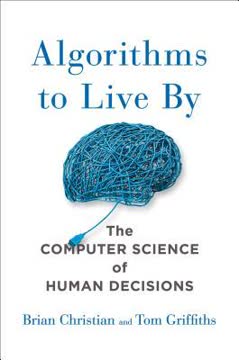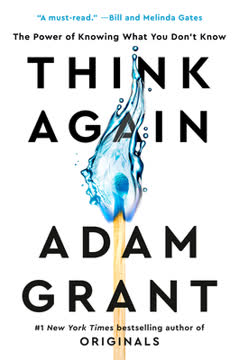Key Takeaways
1. Productivity is about thinking, not just remembering
Evernote is most valuable not as a remembering tool, but as a thinking tool.
Beyond storage. Evernote and similar tools are not just digital filing cabinets. They serve as extensions of our cognitive processes, enhancing our ability to connect ideas, synthesize information, and generate new insights. The real power lies in using these tools to support mid-level thinking that bridges low-level memory functions with high-level creativity.
Promoting creativity. By capturing diverse media formats and enabling flexible organization, these tools foster unusual associations – a key component of creative thinking. They allow users to create visual artifacts of ideas, which can be manipulated and rearranged, facilitating distributed cognition across digital "artifacts."
Long-term incubation. These tools enable the "slow burn" of ideas over extended periods. By providing a durable, centralized, and persistent platform for storing and revisiting thoughts, they increase the chances of serendipitous connections and breakthrough insights.
2. States of mind are the new competitive advantage
I believe states of mind are not just cool trips, but concrete competitive assets.
Beyond skills and knowledge. In the modern workplace, the ability to access and manage diverse mental states is becoming increasingly valuable. These states – such as flow, focused concentration, or creative imagination – are difficult to reproduce on demand and resist imitation, making them a source of competitive advantage.
Adapting to context. Different mental states are highly adapted to specific contexts, like specialized tools. The ability to switch between these states allows individuals to respond more effectively to varying work demands and environments.
Cultivating states. Organizations may soon offer services to help employees expand their emotional engagement and enhance performance through various therapeutic and cognitive techniques. This inner work complements the focus on external spaces and experiences in enhancing productivity and creativity.
3. Read Later apps are essential for long-form content consumption
80% of happiness is just paying attention.
Overcoming distractions. Read Later apps help combat the fragmentation of attention caused by constant digital interruptions. By providing a clean, distraction-free interface and offline access, these apps create affordances for focused, long-form reading.
Matching content to context. These apps allow users to save interesting content for consumption at more appropriate times, matching their mood, energy level, and available time. This flexibility increases the likelihood of engaging with substantive material.
Improving filtering. By creating a buffer between discovery and consumption, Read Later apps allow for better curation of content. Users can make more deliberate choices about what to read, aligning their consumption with their true interests and priorities.
4. One-Touch to Inbox Zero: Simplify email management
Every single email is important.
Streamline email function. Strip email down to its core purpose: collecting new inputs. Treat every email as a piece of the puzzle that keeps you sensitized to the full spectrum of possibilities.
Set up downstream systems. Implement four key tools to handle all email content:
- Digital calendar for time-specific events
- Task manager for actionable items
- Reference app for non-actionable information
- Read Later app for content to review later
Practice decisive triage. Process emails using the One-Touch method:
- Archive immediately
- Reply, then archive
- Add to calendar, then archive
- Create a task, then archive
- Send to Reference app, then archive
- Send to Read Later app, then archive
5. Habits are emergent patterns, not isolated behaviors
Habits seem to be little bubbles of structure in the midst of our chaotic lives.
Beyond individual actions. Habits are not discrete, isolated behaviors but emergent patterns arising from complex interactions. They persist despite daily variations and can't be directly programmed or dictated to meet specific objectives.
Grown, not built. Like other emergent phenomena, habits must be cultivated rather than constructed. This process requires balancing different forces at every stage of development, making it resistant to top-down planning or imitation.
Leveraging disturbances. Change in habit patterns often occurs through "disturbance propagation" – using external events or intentional disruptions as seeds for new patterns. This explains why life changes, travel, or intentional "earthquakes" can lead to effortless habit formation or breaking.
6. Self-experimentation is key to personal growth
Self-experimentation, as messy and imprecise as it can be at times, is an excellent method for developing a scientific sensibility in the pursuit of self-knowledge.
N=1 science. While self-experiments lack the rigor of clinical trials, they offer unique benefits for personal growth:
- Concrete reflexivity: Enhancing self-awareness through the act of measurement
- Personal relevance: Ensuring experiments address individual needs and contexts
- Contextlessness: Allowing for the creation of new meanings and interpretations
- Vicarious learning: Facilitating learning through shared experiences in communities
- Risk mitigation: Limiting damage to self-efficacy by framing changes as experiments
Experimental habit formation. Treat new habits as minimum viable behaviors (MVBs) for testing hypotheses about personal change. This approach allows for low-risk exploration of new behaviors and lifestyle changes.
Continuous learning. Embrace a cycle of monthly habit experiments, starting new trials regularly regardless of preparedness. This approach lowers stakes and promotes ongoing personal development.
7. Immersion, experimentation, and leverage drive innovation
The smartest way to solve a problem is no longer to attack it directly.
Immersion in streams. Expose yourself to diverse streams of ideas, people, and capabilities to stay sensitized to emerging opportunities and threats. The faster the stream, the more novel perspectives you encounter.
Rapid experimentation. Place many small bets in different directions to capitalize on quickly falling downsides and rapidly expanding upsides. Embrace failure as a learning opportunity, recognizing that it's often faster and cheaper to learn from failure than to anticipate every possible outcome.
Leverage through networks. Rapidly shift resources to new, fruitful directions as opportunities emerge. Create your own leverage points by identifying and utilizing previously overlooked or "wasted" resources.
Network-centric problem-solving. Instead of direct attacks on complex problems, create networks to defeat networks. Fill your environment with diverse inputs and catalysts to maximize the chances of serendipitous solutions emerging.
Last updated:
Praxis Series
Similar Books










Download PDF
Download EPUB
.epub digital book format is ideal for reading ebooks on phones, tablets, and e-readers.







